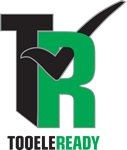Economy/Finances
Individual Needs (Microeconomic Level)
The individual simultaneously represents the demand and supply side of economic management during disaster recovery. Individual needs (Microeconomic Level) include maintaining livelihoods such as employment security, payment of salaries and wages, debt servicing, access to bank accounts and insurance payouts. Equally, on the demand side the individual is an important contributor to local economic sustainability through their purchasing behaviors and general consumption.
Businesses or Firms
The impact of disasters upon firms, both large and small, may produce partial or complete incapacitation. In any event the window of survival for affected firms will vary and the goal of disaster recovery should be prompt restoration of necessary trading conditions. Aside from infrastructural aspects, recovery action may include direct assistance to individual businesses. For example, asset protection and salvage is important, as is the availability of information to assist decision-making and planning. Reliance on ‘just-in-time’ deliveries, an available workforce and customer confidence are further issues requiring consideration for recovery processes.
Infrastructure
Restoration of damaged infrastructure is a crucial requirement for normalizing business activity. When firms lose the ability to function the negative impacts are both short term, in lost productivity and longer term, with business closures and related domino effect consequences. The infrastructural demands of business activity are diverse, including for example basic utilities, telecommunications, and access to transport. Prioritizing the restoration of infrastructure may depend on the economic characteristics and dependencies of disaster affected areas. This may include clearance of major arterial routes and restoration of key utilities.
Local Government (Macroeconomic Level)
Local government will have a role of monitoring the economic impacts of disasters and intervening when economic recovery is seriously impeded. Typically, delivery of assistance should be via appropriate local agencies to secure necessary support and ensure coordination with other relief efforts. Local government assistance should adopt a form that optimizes the rate of recovery, or prevents serious negative spillover effects, such as the collapse of affected regional economies. Additionally, local government activities include securing the confidence of stakeholders, including organizations and governments and the private sector, all of which may affect Tooele County’s ability to recover.
Definitions of Economy and Finance
An economy is the large set of inter-related production and consumption activities that aid in determining how scarce resources are allocated. In an economy, the production and consumption of goods and services are used to fulfill the needs of those living and operating within it.
- Market-based economies tend to allow goods to flow freely through the market, according to supply and demand.
- Finance is a term for matters regarding the management, creation, and study of money and investments.
- Finance is a term broadly describing the study and system of money, investments, and other financial instruments.
- Finance can be divided broadly into three distinct categories: public finance, corporate finance, and personal finance.
- More recent subcategories of finance include social finance and behavioral finance.
- The history of finance and financial activities dates back to the dawn of civilization. Banks and interest-bearing loans existed as early as 3000 BC. Coins were being circulated as early as 1000 BC.
- While it has roots in scientific fields, such as statistics, economics, and mathematics, finance also includes non-scientific elements that liken it to an art.
“Finance” is typically broken down into three broad categories:
Public finance includes tax systems, government expenditures, budget procedures, stabilization policy and instruments, debt issues, and other government concerns.
Corporate finance involves managing assets, liabilities, revenues, and debts for a business.
Personal finance defines all financial decisions and activities of an individual or household, including budgeting, insurance, mortgage planning, savings, and retirement planning.


